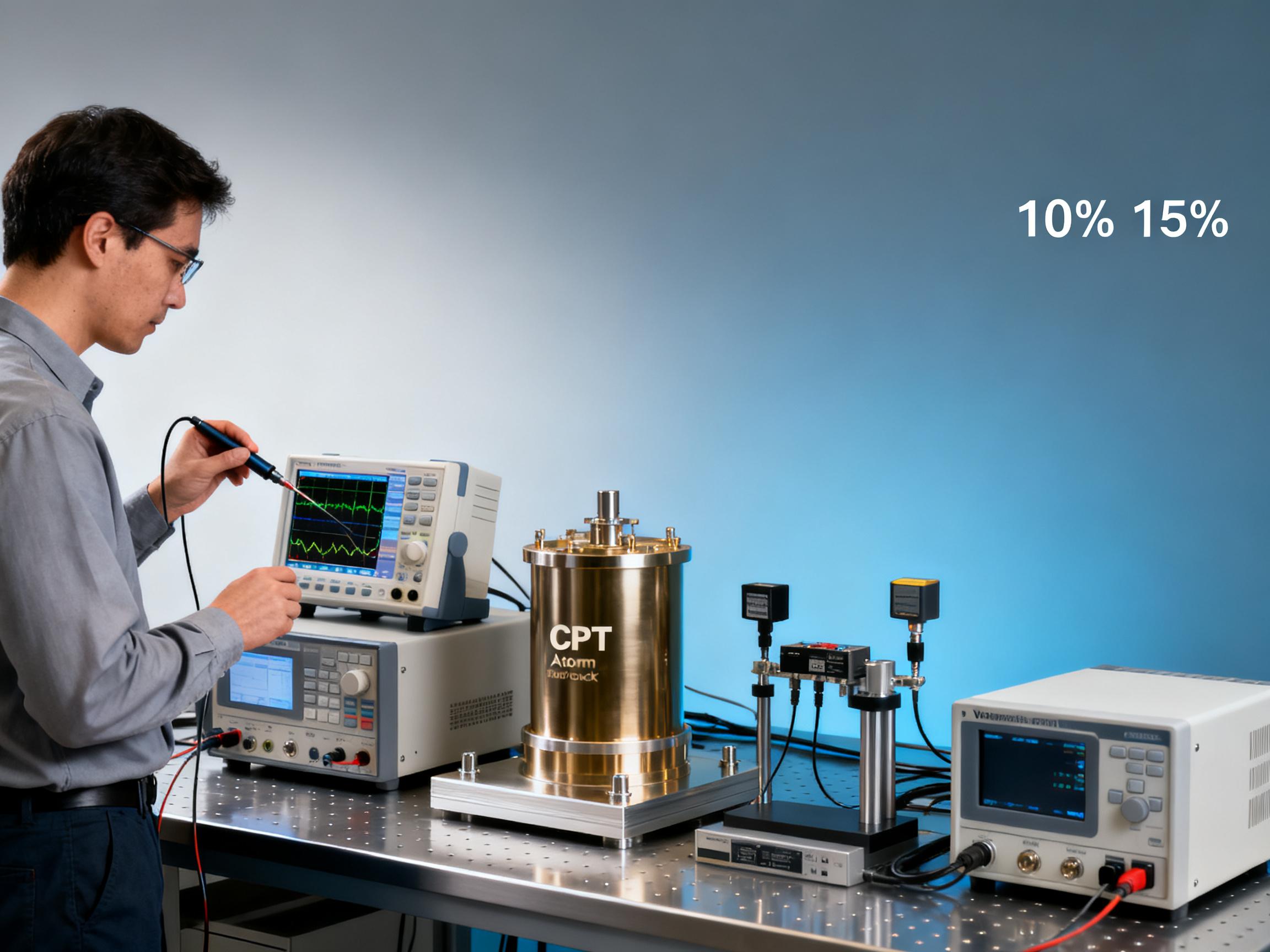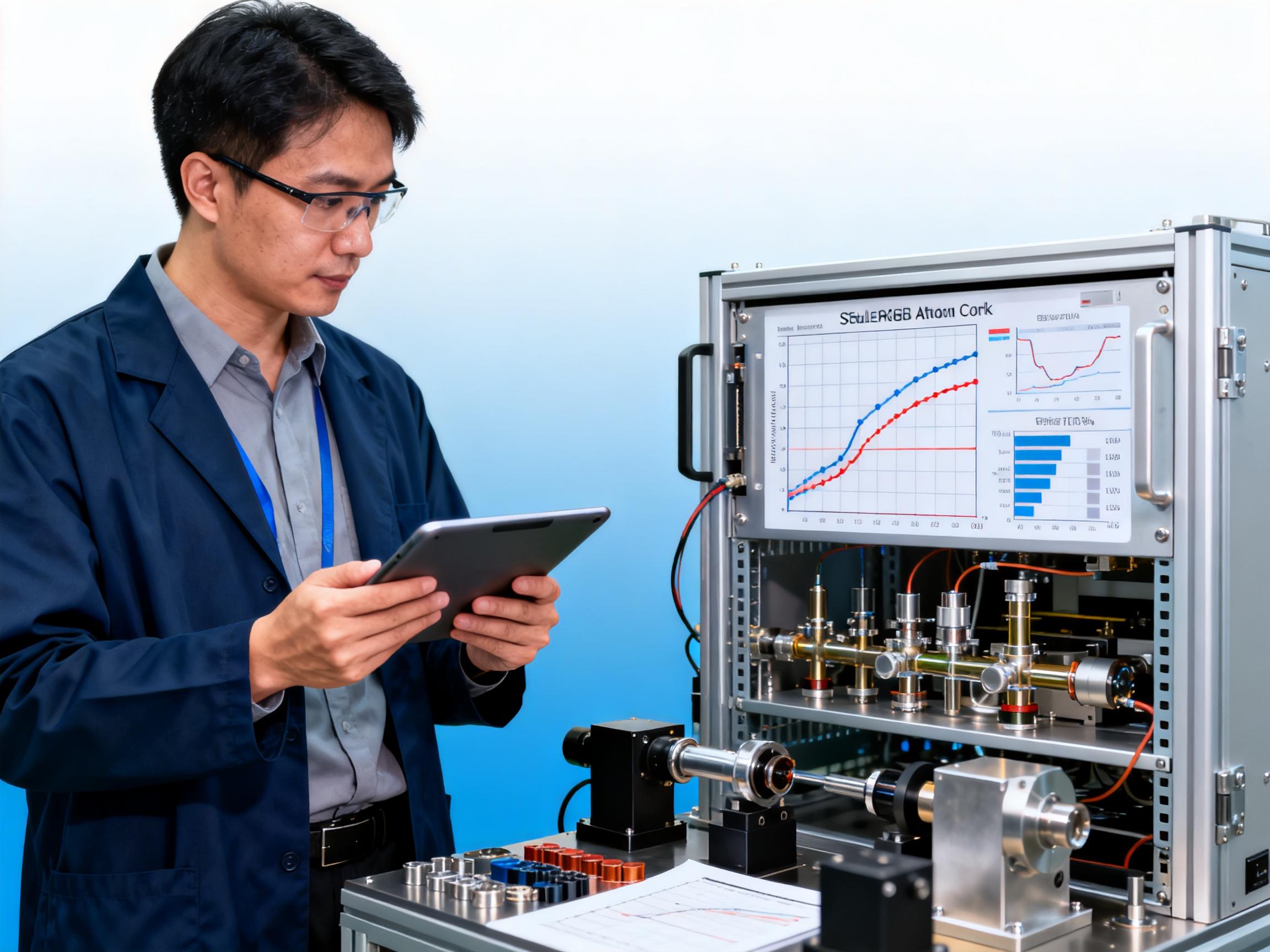RELATED
![How CPT Atomic Clocks Reduce OPEX in 5G Base Stations [Real Data] How CPT Atomic Clocks Reduce OPEX in 5G Base Stations [Real Data]](https://usimg.bjyyb.net/grey.png?x-oss-process=image/resize,m_fixed,w_800,h_600,limit_0) How CPT Atomic Clocks Reduce OPEX in 5G Base Stations [Real Data]2025-12-11
How CPT Atomic Clocks Reduce OPEX in 5G Base Stations [Real Data]2025-12-11 2024 CPT Atomic Clock vs Rubidium: Which Offers Better Stability for Telecom Networks?2025-12-08
2024 CPT Atomic Clock vs Rubidium: Which Offers Better Stability for Telecom Networks?2025-12-08 Live Demo Results: CPT Atomic Clock Performance Under Harsh Environmental Tests (Data Inside)2025-12-05
Live Demo Results: CPT Atomic Clock Performance Under Harsh Environmental Tests (Data Inside)2025-12-05 Budgeting for Precision: Total Cost of Ownership for a Rubidium Atomic Clock Over 5 Years2025-12-03
Budgeting for Precision: Total Cost of Ownership for a Rubidium Atomic Clock Over 5 Years2025-12-03
MESSAGE
High-precision time and frequency synchronization system plays an indispensable role in many key fields today. The following are its main application scenarios in the fields of communication, power, aerospace, finance, scientific research, intelligent transportation, industrial automation and security monitoring:
1. Communication Field:
In the new generation of communication networks such as 5G and 6G, high-precision time and frequency synchronization system is the cornerstone of network performance. Accurate time synchronization between base stations can ensure the accurate transmission and reception of signals and avoid interference and signal conflicts. For example, in large-scale multiple-input multiple-output (MIMO) technology, multiple antennas need to send and receive signals at precise time points to achieve high-speed data transmission. At the same time, in optical communication networks, high-precision time and frequency synchronization systems ensure accurate synchronization of optical signals between different nodes, improving the transmission capacity and reliability of the network.
2. Power Field:
The stable operation of the power system depends on high-precision time synchronization. In power grid dispatching, the equipment of each substation and power plant needs to be accurately synchronized to ensure the accuracy of real-time monitoring, fault diagnosis and protection actions of power. For example, when a power grid fails, a high-precision time-frequency synchronization system enables equipment such as a fault recorder to accurately record the time and process of the failure, providing an accurate basis for subsequent fault analysis and processing. In addition, in the process of distributed energy access to the power grid, a high-precision time-frequency synchronization system also helps to achieve the stable integration and coordinated control of new energy generation.
3. Aerospace:
In the aerospace field, high-precision time-frequency synchronization systems are essential for the navigation, communication and control of aircraft. In satellite navigation systems, such as GPS and Beidou, the atomic clocks on satellites provide a high-precision time reference, and through precise time synchronization with ground stations, accurate positioning and navigation of aircraft are achieved. In aviation flights, various electronic equipment on aircraft, such as autopilots, communication radios, etc., also require precise time synchronization to ensure flight safety and smooth communication. In addition, in the deep space exploration mission of spacecraft, high-precision time-frequency synchronization systems can ensure the accuracy of communication and data transmission between spacecraft and the earth.
4. Financial Field:
Financial transactions have extremely high requirements for time accuracy and consistency. In securities trading, high-precision time-frequency synchronization systems ensure that the timestamps of trading orders are accurate and prevent trading disputes. For example, in high-frequency trading, nanosecond-level time accuracy enables trading strategies to be executed more accurately, improving trading efficiency and market competitiveness. In bank clearing systems, accurate time synchronization ensures accurate transfer of funds and consistency of account processing, and maintains the stable operation of the financial system.
5. Scientific Research Field:
In scientific research, high-precision time-frequency synchronization systems provide accurate time benchmarks for various experiments. In physics experiments, such as atomic physics and quantum physics, high-precision time measurement and synchronization are the key to achieving experimental goals. For example, in the research and application of atomic clocks, high-precision time-frequency synchronization systems can improve the accuracy and stability of atomic clocks and provide support for the establishment and application of time-frequency standards. In astronomical observations, high-precision time-frequency synchronization systems enable telescopes in different locations to observe accurately and synchronously, improving the accuracy and reliability of observation data.
6. Intelligent Transportation Field:
In intelligent transportation systems, high-precision time-frequency synchronization systems provide important support for vehicle autonomous driving, vehicle-road collaboration and traffic management. In self-driving cars, precise time synchronization between vehicles can achieve collaborative driving between vehicles, improve driving safety and traffic efficiency. For example, in automatic platoon driving, vehicles maintain safe vehicle distances and driving speeds through precise time synchronization. In intelligent traffic management systems, high-precision time and frequency synchronization systems enable traffic lights, monitoring equipment, etc. to work precisely and synchronously, optimize traffic flow, and reduce congestion.
7. Industrial Automation Field:
In industrial automation production lines, high-precision time and frequency synchronization systems ensure precise collaborative work between various devices. For example, in automobile manufacturing production lines, robots, conveyor belts, testing equipment, etc. require precise time synchronization to achieve efficient production processes. At the same time, in the industrial Internet of Things, high-precision time and frequency synchronization systems enable various sensors, actuators, and controllers to accurately synchronize data acquisition and control instruction transmission, and realize real-time monitoring and optimization of industrial production processes.
8. Security Monitoring Field:
In security monitoring systems, high-precision time and frequency synchronization systems ensure time consistency between monitoring devices. For example, in a multi-camera surveillance scenario, accurate time synchronization can accurately align the video images shot by different cameras in time, which is convenient for subsequent video analysis and event tracing. At the same time, in security systems such as intrusion detection and fire alarm, high-precision time and frequency synchronization systems can enable each sensor and alarm device to work accurately and synchronously, improving the response speed and accuracy of the security system.
CONTACT US
Please use the form below to get in touch.
If you need a reply we will get in touch as soon as possible.

![How CPT Atomic Clocks Reduce OPEX in 5G Base Stations [Real Data] How CPT Atomic Clocks Reduce OPEX in 5G Base Stations [Real Data]](https://usimg.bjyyb.net/sites/91500/91958/1765179857856560163985903616.jpeg)



